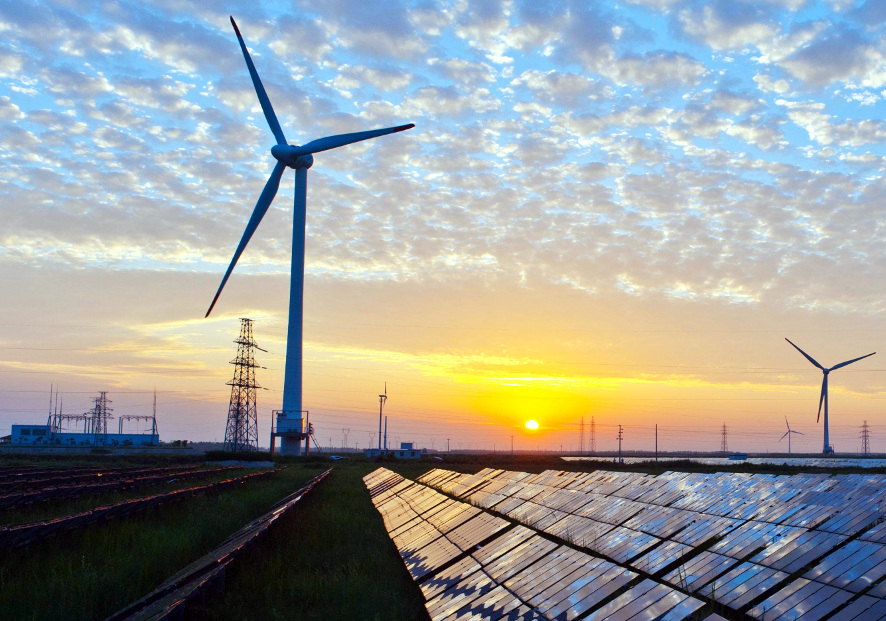
by: Theresa Geib
One of the priorities of the Trump administration has been to “roll back” the Obama era rules that this administration has deemed to be an overreach of federal power.[1] On June 19, 2019, the U.S. Environmental Protection Agency issued the final Affordable Clean Energy (ACE) rule and repealed the Clean Power Plan (CPP).[2] The CPP incentivized transitioning to renewable energy production; instead, the ACE requires states to develop state plans establishing performance standards for greenhouse gas emissions from certain fossil fuel-based energy producers.[3] The general concern among states is that this shift in regulation will encourage older, specifically coal-powered, plants to focus on updating technology within that form of power production rather than shifting development to renewable energy.[4]
Absent federal regulation over renewable energy, a majority of states already have implemented or have plans to implement Renewable Portfolio Standards (RPS) requiring specific percentages of energy to come from renewable resources.[5] Since 2002, California has been working to shift away from reliance on fossil fuels by continuing to increase the use of renewable energy.[6] The most recent California legislation is requiring that the state achieve sixty percent renewable energy by 2030 and one hundred percent renewable energy by 2045.[7] Hawaii has passed and Massachusetts is in the process of establishing legislation similar to that of California.[8] New Jersey, New York, Oregon, Vermont, and Washington, D.C. all have passed RPS which have requirements of fifty percent or greater for renewable energy.[9]
Additionally, over half of the states in the United States have some form of RPS with varying degrees of enforcement.[10] For those states seeking to achieve fifty percent or greater renewable energy, significant development will be required in renewable energy technology and infrastructure.[11] RPS have been responsible for about half of all renewable energy growth in the United States.[12] Therefore, even with a lack of federal involvement, the states themselves are acting as a driving force for renewable energy development.
Another factor promoting the development of renewable energy technology is the utility companies because of investments made and decreased costs of renewable energy. Public Service Enterprise Group (PSEG), a coalition of some of the county’s largest power companies, is against the ACE because its companies have already invested in a market centered around the production of renewable energy and it intends to continue to reduce emissions among its members.[13] Companies are taking these measures because renewable energy, even in the absence of federal subsidies, are becoming increasingly competitive.[14] Massachusetts, in launching their renewable energy program “estimate[es] savings of over $2.5 billion each year for residential, municipal, industrial and commercial customers. . . .”[15]
While the Trump administration has
removed federal incentives for transitioning to renewable energy, this change
will not have a substantial impact on renewable energy development. States and
companies are motivated to switch to renewable energy because state legislation
continues to support the change to renewable energy and utility companies have
invested a substantial amount of money into transitioning to renewable energy.
Therefore, renewable energy technology will continue to develop in the absence
of federal regulation.
[1] Nadja Popovich, Livia Albeck-Ripka
& Kendra Pierre-Louis, 85 Environmental Rules Being
Rolled Back Under Trump, N.Y. Times,
Sept. 12, 2019, https://www.nytimes.com/interactive/2019/climate/trump-environment-rollbacks.html
(last visited Sept. 23, 2019).
[2] EPA Finalizes Affordable Clean Energy Rule, Ensuring Reliable, Diversified Energy Resources while Protecting our Environment, https://www.epa.gov/newsreleases/epa-finalizes-affordable-clean-energy-rule-ensuring-reliable-diversified-energy (last visited Sept. 23, 2019).
[3] Adopting Requirements in Emission Guidelines for Municipal Solid Waste Landfills, 40 C.F.R. § 60 (2019) (effective September 6, 2019).
[4] AG Ferguson files lawsuit challenging repeal and replacement of Clean Power Plan, https://www.atg.wa.gov/news/news-releases/ag-ferguson-files-lawsuit-challenging-repeal-and-replacement-clean-power-plan (last visited Sept. 25, 2019).
[5] See National Conference of State Legislatures, State Renewable Portfolio Standards and Goals, (Feb. 1, 2019), https://www.ncsl.org/research/energy/renewable-portfolio-standards.aspx (last visited Sept. 23, 2019).
[6] Ethan N. Elkin et al., New Solar Landscape: Improving County-Level Landscape Planning for Utility-Scale Solar PV Facilities, 1, 6 (2018)
[hereinafter New Solar Landscape]
.
[7] Cal. Pub. Util. Code § 399.15(b) (Deering 2019).
[8] Haw. Rev. Stat. § 269-92 (2019); H.R. 2836, 191st Gen. Court (Mass. 2019).
[9] State Renewable Portfolio Standards and Goals, National Conference of State Legislatures (Feb. 1, 2019), https://www.ncsl.org/research/energy/renewable-portfolio-standards.aspx (last visited Sept. 23, 2019).
[10] Id.
[11] New Solar Landscape, 1 (acknowledging that California will require significant development of new renewable energy facilities to achieve its 2045 energy goals).
[12] Galen L. Barbose, U.S. Renewables Portfolio Standards: 2019 Annual Status Update, Berkeley Lab (July 2019), https://emp.lbl.gov/publications/us-renewables-portfolio-standards-2 (last visited Sept. 23, 2019) (noting that there has been a decrease overall in the importance of RPS in renewable energy development, but that RPS still serve a central role in motivating renewable energy growth).
[13] Tom Johnson, PSEG Joins Battle Against Repeal of Obama-Era Curb on Power Plant Pollution, N.J. Spotlight (Sept. 18, 2019), https://www.njspotlight.com/stories/19/09/17/pseg-joins-battle-against-repeal-of-obama-era-curb-on-power-plant-pollution/ (last visited Sept. 23, 2019) (“‘With the necessary advances in technology and public policy, we have a vision of achieving net-zero carbon emissions for our fleet by 2050,’ said PSEG in another statement.”).
[14] Justin Gillis & Hal Harvey, Why a Big Utility is Embracing Wind and Solar, N.Y. Times, Feb. 6, 2018, https://www.nytimes.com/2018/02/06/opinion/utility-embracing-wind-solar.html (last visited Sept. 23, 2019).
[15] Clean Energy and Climate Plan for 2020, Exec. Office of Energy and Envtl. Affairs, https://www.mass.gov/service-details/clean-energy-and-climate-plan-for-2020.


